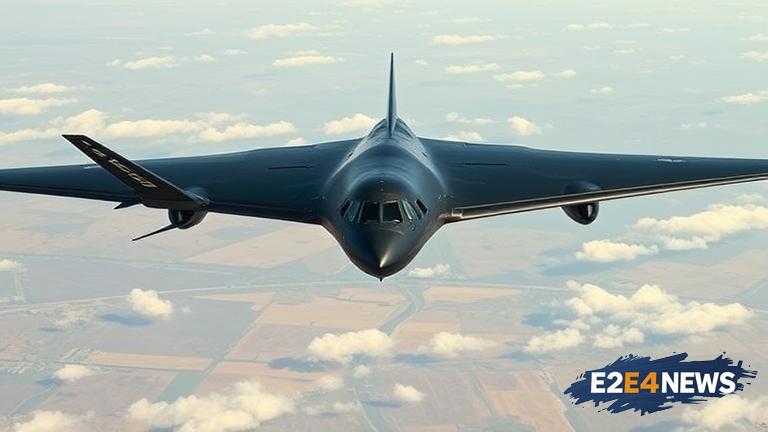The B-2 Stealth Bomber, a marvel of modern aviation, owes its unique design to the pioneering work of John Northrop, an American aircraft designer. Northrop’s all-wing vision, which he developed in the 1930s and 1940s, revolutionized the field of aviation by introducing a new approach to aircraft design. The all-wing concept, also known as the flying wing, eliminated the need for a traditional fuselage and tail section, resulting in a more aerodynamically efficient and stealthy aircraft. Northrop’s innovative design was initially met with skepticism, but he persevered, and his company, Northrop Aircraft, began building experimental flying wing aircraft. One of the earliest examples of the flying wing design was the Northrop N-1M, which first flew in 1940. Although the N-1M was not without its challenges, it paved the way for future developments, including the XB-35 and XB-49 experimental bombers. The XB-35 and XB-49, which were developed in the 1940s, were the first large-scale flying wing aircraft, and they demonstrated the potential of Northrop’s all-wing vision. However, it wasn’t until the 1980s, when the US Air Force launched the Advanced Technology Bomber (ATB) program, that the flying wing design would be fully realized. The ATB program led to the development of the B-2 Stealth Bomber, which was designed by Northrop Grumman (formerly Northrop Aircraft) and first flew in 1989. The B-2’s unique flying wing design, combined with its advanced materials and stealth technology, made it nearly invisible to radar, giving it a significant advantage over traditional aircraft. The B-2 has been used in several military operations, including the Kosovo War and the Iraq War, and it remains an important part of the US military’s arsenal. Despite its success, the B-2 program was not without its challenges, including significant cost overruns and technical difficulties. Nevertheless, the B-2 Stealth Bomber is a testament to the innovative spirit of John Northrop and the power of his all-wing vision. Today, the B-2 remains a vital component of the US military’s strategic bomber fleet, and its design continues to influence the development of new aircraft. The story of the B-2 Stealth Bomber is a reminder of the importance of innovation and perseverance in the pursuit of technological advancements. The B-2’s impact on the aviation industry has been significant, and its legacy will continue to be felt for generations to come. The development of the B-2 also highlights the importance of collaboration between government agencies, private industry, and academia in driving innovation and advancing technological capabilities.
